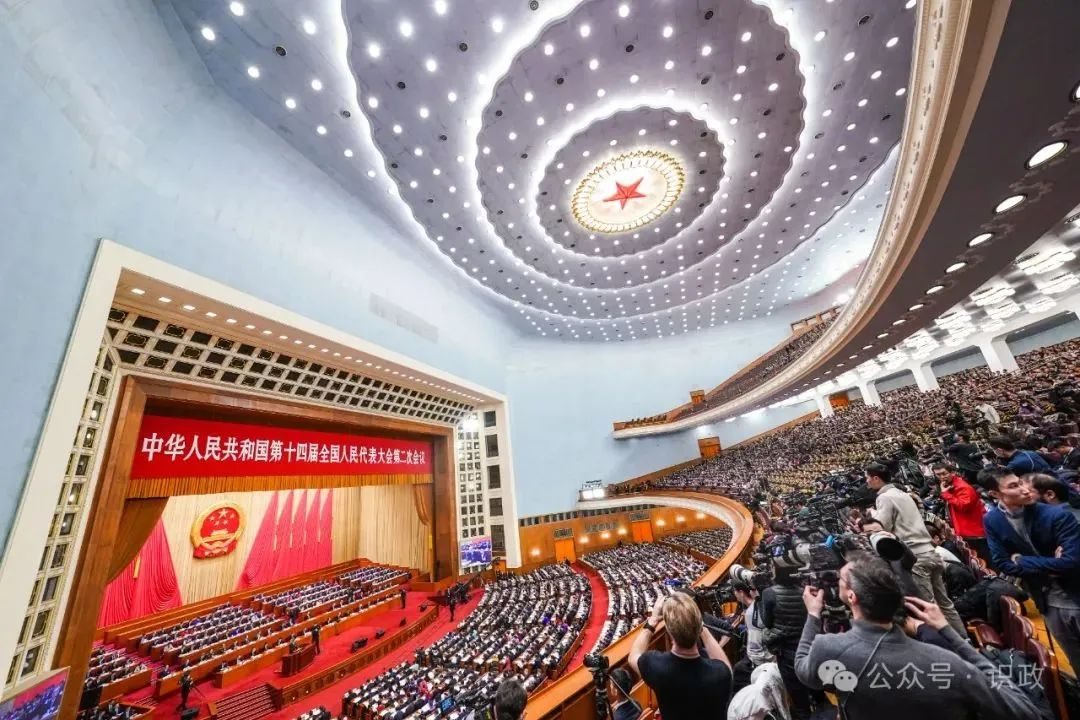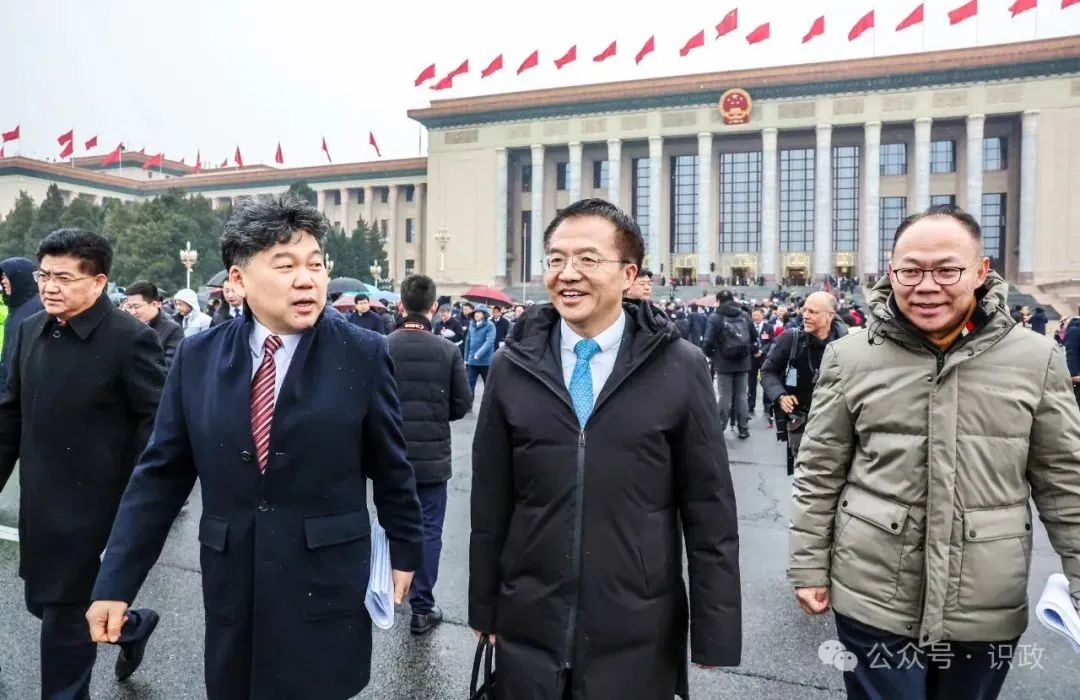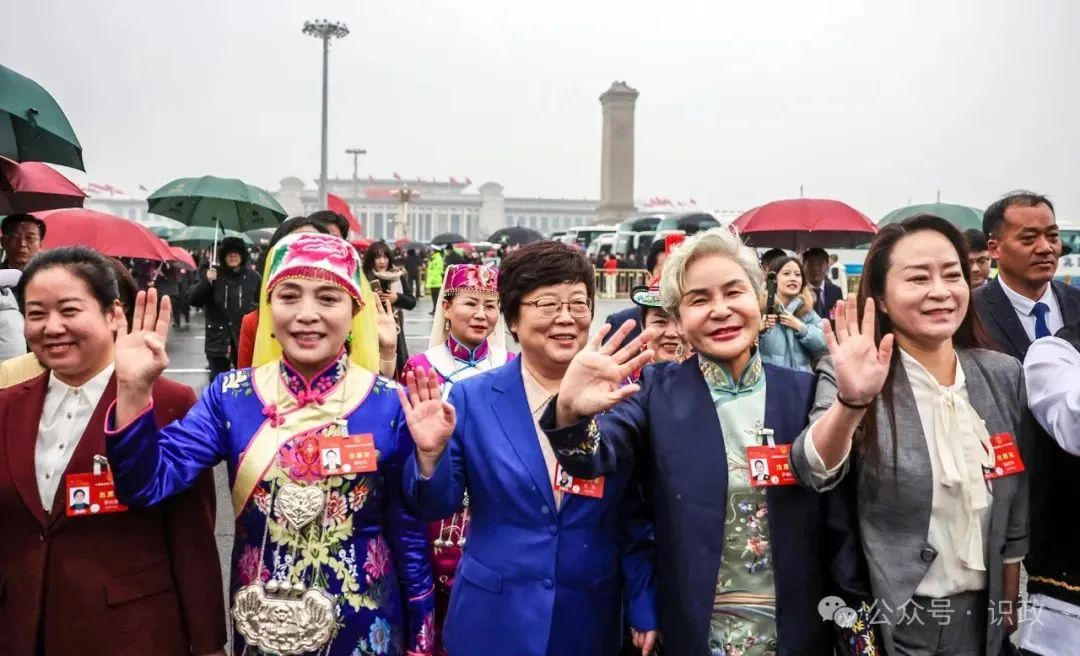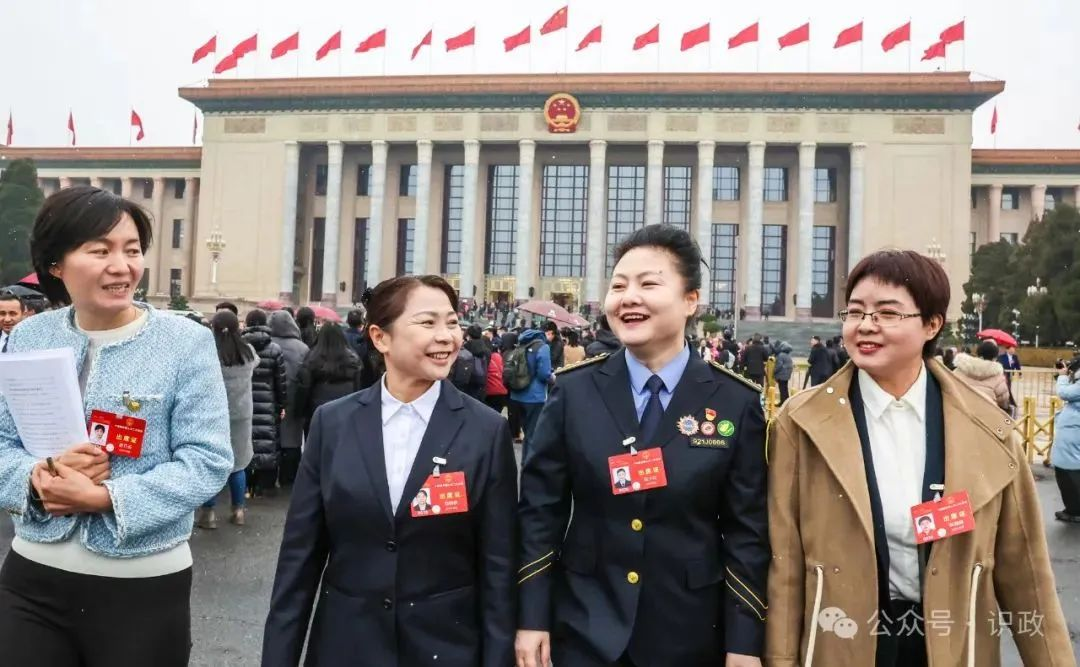On the morning of March 5, the much-anticipated second session of the 14th National People’s Congress (NPC) opened at the Great Hall of the People, with Premier Li Qiang delivering the government work report. The report mentioned Beijing’s work, including the coordinated development of the Beijing-Tianjin-Hebei region, flood response, the China International Fair for Trade in Services (CIFTIS), and the development of the international innovation center.

Keyword: flood response
Original text: We Responded effectively to major floods in the Hai River basin and other basins
By the end of last year, Zhang Weixia and her family from the disaster-stricken Xiehejian village in Mentougou district moved into the newly refurbished house. She said: “The heating system functions well in winter and the indoor temperature exceeds 20 degrees Celsius. It is very warm.”
Back in late July and early August last year, a rare torrential downpour hit Beijing unexpectedly. From 8:00 p.m. on July 29 to 7:00 a.m. on August 2, the city experienced an average precipitation of 331 millimeters, and the 83-hour rainfall amounted to 60% of the typical annual total. Severe flooding was triggered as a consequence, with the peak discharge of the Dashi River and the Juma River reaching 9 times and 4 times that of the extreme rainfall event on July 21, 2012.
In the face of this sudden natural disaster, it was the unity and strong will of the people in the city that led to significant progress in flood control and disaster relief.
Beijing closely monitored the progression of Typhoon Doksuri from the beginning. With early assessment and preparation, it promptly issued a red alert for heavy rain, activated a Level-I emergency response for flood, and evacuated 542,000 people from construction sites and high-risk areas in advance.
Rescuers from across the country ventured fearlessly into the storm to carry out urgent rescue missions. Thanks to their tireless efforts, all 2,831 passengers and crew members trapped or stranded in three trains escaped unscathed. Working around the clock, the lifesavers also managed to open up lifelines to the disaster area, search for the missing, and rescue the trapped.
“As long as we have food to eat, we won’t let stranded passengers go hungry.” This was a moving statement by Meng Ermei, Party Secretary of Luopoling Community. No matter how strong the storm was, Party members and officials were always the first to rush to the forefront to protect the people. The bright red Party flag flew high at the frontline of disaster relief and reconstruction.
With the safety and well-being of the people in mind, the city has accelerated post-disaster recovery and reconstruction efforts: over 300,000 affected residents were properly resettled; all 759 schools reopened on schedule; more than 10,000 damaged houses were renovated; and water, electricity, gas, and heat supplies were restored to pre-disaster levels.
Reconstruction should aim for higher-quality development. Following the principle of “restore in one year, upgrade in three years, and achieve high-quality development in the long run”, Beijing has formulated a system to better prevent and mitigate disasters, with a focus on raising the standard of river flood control and safety standards for houses and roads, and enhancing flood and waterlogging prevention capacity.
After the storm, a more resilient and safer Beijing is emerging.

Keyword: Belt and Road Forum for International Cooperation
Original text: China hosted a number of major diplomatic events, including the China-Central Asia Summit and the Third Belt and Road Forum for International Cooperation
At this critical juncture of the 10th anniversary of the Belt and Road Initiative (BRI), representatives from 151 countries and 41 international organizations gathered in Beijing for a grand celebration.
On October 18, 2023, the Third Belt and Road Forum for International Cooperation was convened. In his keynote speech titled “Building an Open, Inclusive and Interconnected World For Common Development”, President Xi Jinping reviewed the fruitful results of the past decade and announced eight major steps that China will take to support the joint pursuit of high-quality Belt and Road cooperation. This has charted a new course, laid out a new vision, and generated a new impetus for BRI.
Results of the Forum were fruitful: 458 deliverables were yielded, far more than the previous edition; $97.2 billion worth of business contracts were signed at the CEO Conference, contributing to job creation and economic growth. The Forum also decided to establish a secretariat to drive institutional development and project implementation.
As the host of the Forum, Beijing has made every effort to ensure good services, thus enhancing the reputation of “Beijing Services”.
The carefully designed cityscape created an atmosphere embodying the grandeur of China as a major country, the charm of Beijing as an ancient capital, and its openness, inclusiveness, and hospitality. The cutting-edge smart devices and technological innovations presented participants with a modernized and intelligent experience. The debut of carbon emission reduction equipment highlighted the city’s commitment to low carbon and environmental protection, making the venue an eco-friendly space. First-class accommodation, catering, and transportation services were provided during the forum. Tour routes were designed to feature intangible cultural heritage such as Peking Opera and tea art, and include popular sites like the Liangma River, allowing Chinese and foreign guests to fully appreciate the unique charm of Beijing.
Foreign participants praised the Forum to be “well-organized with fast and efficient services”. They were impressed by the “hospitality and convenience” they experienced and the “excellent reception” they received. These positive comments serve as vivid testimonials of Beijing’s high-quality services.

Keyword: international innovation center
Original text: We will leverage the leading role of international and regional centers for scientific and technological innovation
Over the past year, Beijing has yielded fruitful results in establishing itself as an international innovation center. For example, the added value of the digital economy constituted 42.9 percent of Beijing’s GDP. Moreover, the technology revenues of enterprises above the designated size in Zhongguancun rose by over 30 percent. These achievements secured the city’s No. 3 spot in the Global Innovation Hubs Index 2023 and solidified its position as a leading international innovation city.
The “engine” of innovation provides a steady stream of power, propelling the “wheel” of high-quality development to roll on vigorously.
To strengthen the country’s strategic scientific and technological capabilities, Beijing has built national laboratories to a high standard and ensured their efficient operation. Its support to new R&D institutions for organized scientific research has led to a series of major original innovation results. A new paradigm has been created to promote closer business-led collaboration between industries, universities, and research institutes. In partnership with innovators such as colleges and universities, scientific research institutes, and leading enterprises, six national technology innovation centers and 78 national engineering research centers have been established.
Efforts have been made to stimulate the high-level development of "three science cities and one hi-tech area". The policies of the new round of pilot reform in Zhongguancun have been extended to the entire Zhongguancun Demonstration Zone, further enhancing its leading and exemplary role. In Huairou Science City, 16 sci-tech facilities and platforms haven been made available for scientific research, marking the formation of a major national sci-tech infrastructure cluster. Initiatives are underway in Future Science City to deepen central-local cooperation, foster university-city integration, and bring into operation a range of projects including research-oriented hospitals. The Demonstration Area for Innovation-based Industrial Clusters. has undertaken more than 270 projects from the three major science cities.
Innovation-driven high-tech industries have seen their advantage consolidated and enhanced. Four new government high-tech industry investment funds of more than 10 billion yuan each, totaling 50 billion yuan, have been channeled into the fields of pharmaceuticals and healthcare, artificial intelligence, robotics, and information industry. Among the ten key high-tech industries, information technology and sci-tech services have emerged as industrial clusters with an annual output value of over one trillion yuan. The remaining eight industries, including pharmaceuticals and healthcare, are worth over 100 billion yuan.
Driven by innovation, Beijing is enjoying enduring and robust growth. The city is poised to become a major world hub for science and innovation in the near future.

Keyword: China International Fair for Trade in Services (CIFTIS)
Original text: Major trade events will be hosted, including the China International Import Expo, the China Import and Export Fair, the China International Fair for Trade in Services, and the Global Digital Trade Expo
Themed "Opening-up leads development, cooperation delivers the future," CIFTIS commenced in Beijing as scheduled on September 2, 2023, the golden autumn season.
CIFTIS could not have come at a better time. The world today is confronted with accelerated changes unseen in a century and sluggish economic recovery. As the backbone of the global economy, trade in services and the service sector are witnessing the emergence of new technologies, new business forms and models, making them the focus of the new phase of high-standard opening-up. The year 2023 marks the 45th anniversary of China's reform and opening-up. It has been widely acknowledged that "we should commit ourselves to openness to meet development challenges, foster synergy for cooperation, build the momentum of innovation, and deliver benefits to all".
Amidst a world of both opportunities and challenges, China's trade in services has demonstrated strong resilience. In 2022, the total import and export of services reached a record high of nearly six trillion yuan, up 12.9 percent year on year, securing China's position as the world's second-largest trader in services for nine consecutive years.
"China will remain committed to promoting high-standard opening up and advancing Chinese modernization on all fronts through high-quality development, thereby providing new opportunities for openness and cooperation across the world," said President Xi Jinping in his video speech at the Global Trade in Services Summit. The address also highlighted the important steps China will take to deepen its high-standard opening-up in the service sector, declaring China's unswerving determination to expand openness.
As China’s pacesetter for greater opening-up in the service sector, Beijing's service sector and trade in services have shown robust growth. In 2022, for instance, its total import and export of services exceeded one trillion yuan, accounting for 21.4 percent of foreign trade, nine percentage points higher than the national average. From 2020 to June last year, Beijing's total paid-in foreign investment was over 55 billion dollars, or 9 percent of the country's total, of which 96.5 percent came from the service sector.
As a golden brand of China's commitment to opening-up, CIFTIS is gaining international influence. The 2003 event attracted over 9,000 offline and online exhibitors. A total of 83 countries and international organizations participated in the name of their governments or headquarters, covering 28 of the top 30 countries or regions in trade in services. All these spoke volumes about China’s wider circle of friends in international cooperation.
Keyword: Coordinated development of the Beijing-Tianjin-Hebei region (BTH)
Original text: We will support regions with advantages in economic development—the Beijing-Tianjin-Hebei region, the Yangtze River Delta, the Guangdong-Hong Kong-Macao Greater Bay Area—in better playing their role as drivers of high-quality development
“After passing five consecutive trillion-yuan milestones, the total economic output reached 10.4 trillion yuan in 2023, 1.9 times that of 2013.” A number of inspiring figures have attested to the remarkable achievements of the coordinated development of the Beijing-Tianjin-Hebei region over the past decade.
General Secretary Xi Jinping has personally planned, initiated and promoted this major national strategy, from brainstorming, laying the groundwork and seeking breakthroughs to entering the crucial stage and overcoming challenges. It has taken root in the vast land around the capital, and further contributes to the high-quality development in the new era.
Relieving Beijing of functions non-essential to its role as the national capital is the key to coordinated development. With the construction of “one core and two wings” (the capital, the Beijing Municipal Administrative Center and Xiong’an New Area), the development of the Beijing-Tianjin-Hebei region will usher in a bright future.
This has created more space for high-end, precision and sophisticated industries in Beijing. The proportion of newly established market entities in these industries such as technology, commerce, culture, and information has surged from 40.7 percent in 2013 to 66.1 percent in 2023. The dynamic Beijing Municipal Administrative Center (BMC), a dynamic hub for investment, has received over 100 billion yuan per year, steadily bolstering the city's capacity and attractiveness. The burgeoning Xiong'an New Area has expanded the city's structure, unveiling a promising vision of the "city of the future".
With continuous breakthroughs in key areas such as industry, transportation, and ecology, the BTH coordinated development has kept marching forward.
In the past ten years, Beijing has transferred over 280 billion yuan worth of technologies to Tianjin and Hebei. More than 10,000 branches of Zhongguancun enterprises have been established in Tianjin and Hebei. The rail network connecting Beijing, Tianjin, and Hebei has rapidly expanded, now spanning 2,576 kilometers. Air quality has been substantially improved, as evidenced by a 60 percent drop in the average annual concentration of fine particulate matter in the three places by the end of 2023, compared to 2013.
The institutional reform has entered a critical phase fraught with tough challenges, bringing strong vitality and lasting power to the BTH development.
To facilitate the integration of resources across the three places, Beijing-Tianjin-Hebei Intercity Railway Investment Co., Ltd. and other investors and financing entities have been founded to boost the private sector. Meanwhile, a joint meeting mechanism for the pilot free trade zones and guidelines for foreign investment have been launched. Since the establishment of the Beijing Daxing International Airport comprehensive bonded zone, which is China's first inter-provincial comprehensive bonded zone, the number of regional comprehensive bonded zones has increased from two in 2014 to 11 over the past decade.
Despite the differences among Beijing, Tianjin, and Hebei, they all share a common goal. General Secretary Xi Jinping has provided clear and firm guidance for future work, which is to "strive to make the Beijing-Tianjin-Hebei region a pioneer and demonstration zone for Chinese modernization".
As we celebrate the 10th anniversary of the BTH development, the three places are filled with confidence and are well-positioned to enter the next vibrant decade.


